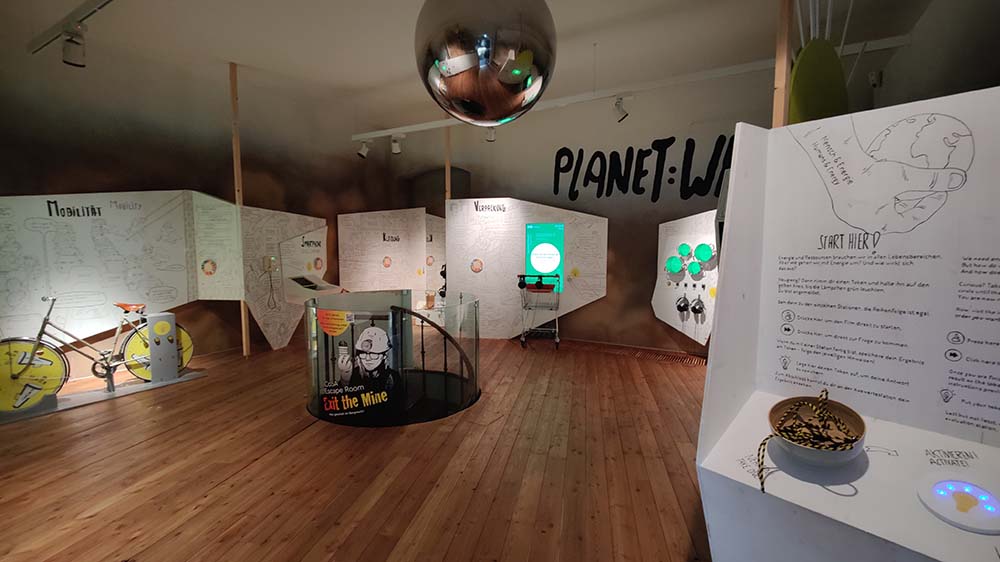Today, I visited the Centre of Science Activities (CoSA) in Graz. CoSA is an interactive science and technology center designed primarily for young people aged 12 and older. It features 13 themed areas where visitors can explore different scientific fields in a hands-on way. For example, the Science section allows visitors to experiment with scientific phenomena, while Vision focuses on future technologies. The space I want to talk about today, though, is Energy.
In Energy, visitors engage with topics like consumption and sustainability in a playful and interactive way. Using a special game token, they can navigate through seven different stations covering energy, mobility, smartphones, clothing, packaging, food, and leisure. Each station presents sustainability-related challenges, encouraging visitors to reflect on their actions, set priorities, and understand the broader impact of their choices. The exhibition also connects personal behavior to global issues, such as the UN’s 17 Sustainable Development Goals. One of the more engaging aspects is that visitors can compare their decisions with others and see who invests more „energy“ into sustainable living.
What I really liked about this space was the gamified experience. It’s not just about absorbing information but actively engaging with it. Visitors learn general concepts about sustainability while also getting a personalized sense of how eco-friendly their everyday choices are. Each station has a unique way of interacting based on its subtopic. For example, in the Energy section, visitors have to crank a handle to play a video and then plug a cable into a power socket to select an answer. In Mobility, visitors power up a screen by riding a stationary bike. The Smartphone station is a modular system where visitors can choose different phone components and see how sustainable their selections are. The Clothing section features various garments with different sustainability ratings, which visitors can scan to learn more about their environmental impact. Some sections were more interactive than others. The Packaging area, for instance, wasn’t as hands-on but had a visually impressive setup with a large screen and a shopping cart in front of it. The Food station was creative, using stove switches to turn on videos that played inside pots, though the placement of the screens required visitors to crouch down to see them properly. The Leisure station, on the other hand, was styled like an arcade machine featuring a game of Snake to illustrate its message.
This visit gave me some valuable takeaways that I hope to incorporate into my master’s project. My goal is to create an interactive experience that teaches people about digital sustainability, much like CoSA does. One key insight is that you shouldn’t expect too much from visitors. There should be no more than two to three interactions per station, and they must be intuitive and quick to engage with. People generally want to explore, try something out, and move on without too much effort or explanation. However, if the experience is immersive enough, they tend to stay longer. Another important consideration is creating an environment that helps visitors focus. Isolating them from external distractions could enhance immersion and engagement. Lastly, the setup should be as self-sufficient as possible. The interactive elements should work seamlessly without requiring constant supervision, explanation, or maintenance. These are crucial lessons that I plan to apply in my upcoming work. Overall, CoSA’s Energy exhibition was an inspiring example of how to make sustainability education both fun and impactful. I left with a lot of ideas and a renewed appreciation for well-designed interactive experiences.



